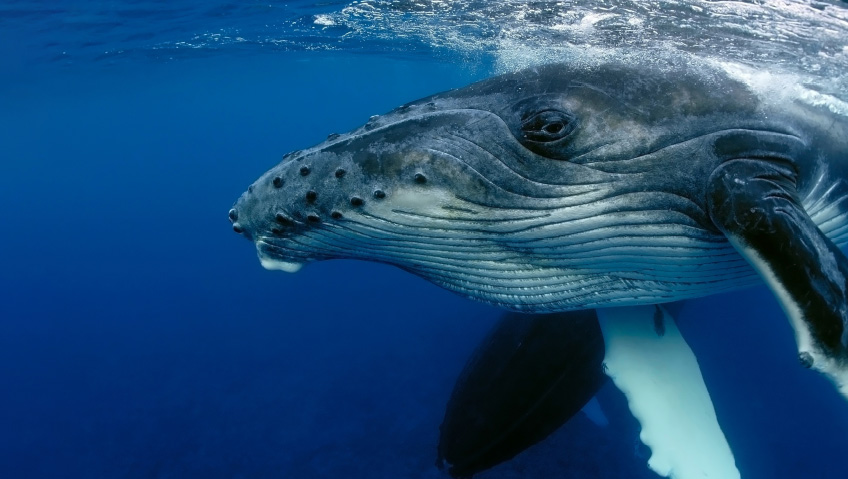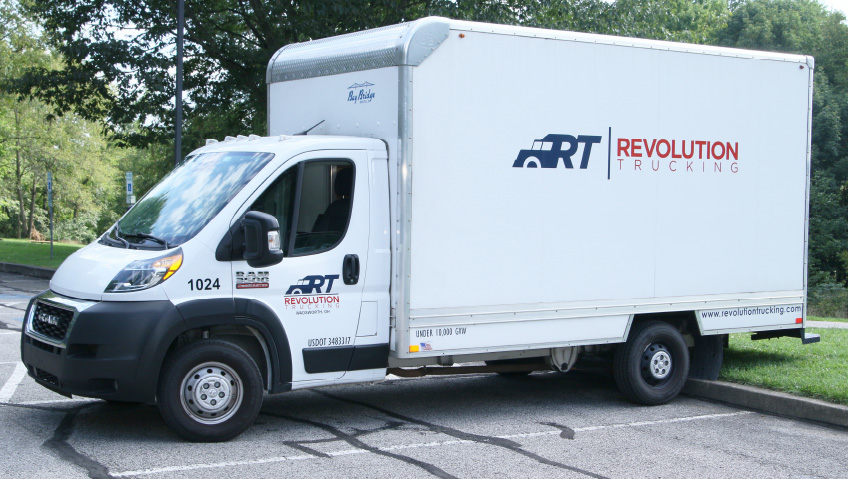How can we find a balance between the economy and the protection of the marine environment when so many of our key industries—international trade and commerce, food production, and tourism—depend upon the ocean? This is the challenge for industries and nations around the world. Finding solutions is no easy task.
The ocean covers over 70 percent of the planet and produces at least 50 percent of the planet’s oxygen, while absorbing carbon dioxide. It is the main source for protein for more than a billion people around the world and will, by 2030, provide employment for an estimated 40 million people, according to the World Oceans Day website maintained by the United Nations.
A recent economic versus environment conflict that occurred when an endangered North Atlantic right whale was seen on May 17th off the northeast coast of New Brunswick during lobster fishing season illustrates the challenges of balancing a healthy marine environment with economic development.
The whale sighting led to a 15-day temporary closure of the lobster fishery (May 17th to 31st) by Fisheries and Oceans Canada (DFO), with traps and gear to be removed by May 22nd, to prevent the whale, a protected species under the Marine Mammal Protection Act of which Canada is a signatory, from becoming entangled in the ropes.
On May 23rd, after 200 members of the Maritime Fisherman’s Union refused to remove 60,000 traps but agreed to not take their boats out, Jérémy Collard, Press Secretary for DFO, issued a statement, Lobster Fishing Area 23 C, which acknowledges that a “temporary closure at the height of a fishing season is a significant blow to our coastal communities and has consequential impacts on fishermen.”
Meanwhile, Bernard Haché, who has fished for 46 years, told Radio-Canada, “We only have 61 days of fishing to make our year and then (DFO) comes to pull the rug out from under us, that doesn’t make any sense at all.”
Recognizing the urgency of the situation, Collard convened a meeting to attempt to balance legal obligations regarding whale protection, fishermen’s rights to earn a living, and the lucrative export market.
“We need to work together to prevent whale entanglements to ensure that Canada’s world-class seafood products continue to be recognized as sustainable. This will ensure that the seafood our harvesters fish continues to command high prices and open markets around the world,” he said.
On the same day, Acadie-Bathurst MP Serge Cormier was quoted in a Brunswick News article by Adam Huras, saying he can “no longer defend” his government’s right whale protective measures, which must change to avoid a “crisis in the lobster and snow crab fisheries, which could cost the processing industry between $25 and $30 million.”
By the end of the day a compromise was reached, and the crisis averted. DFO agreed to re-open the lobster fishery in shallow zones close to the shore while the fishermen agreed to bring in traps they had set in deep water where whales are more likely to travel.
A week later, Minister of Fisheries Diane Lebouthiller announced that DFO is giving $850,000 to Whale Seeker, a company which has received recognition from UNESCO for its AI technology that can analyze aerial images and detect marine mammals 25 times faster than the human eye.
According to a May 29th article in The Globe and Mail, “cargo ships can use the application to avoid collisions with whales, dolphins and porpoises, while the government can use it to determine whether fishing zones need to be closed.”
Balancing the ocean ecosystem with the ocean economy is not an easy matter for Canada, with the longest coastline (243,042 km) in the world. Over 300,000 jobs are linked to the ocean, which generates $31.7 billion in goods and services.
In Canada, the U.S., and globally, the economic stakes are high and achieving the right balance with environmental concerns will require a mix of private and public leadership, innovative approaches, international cooperation, and public education.
Raising the alarm
It wasn’t until the 1950s and ’60s, when oceanographer and documentary filmmaker Jacques Cousteau made the public aware of the amazing underwater world, that people began to value the oceans, but it was still decades before serious efforts were made to protect them.
Degradation of our oceans, the largest ecosystem on the planet, with more than 30,000 documented species, can be traced back 200 or more years. The whale population is the first documented species to go into decline because of human activity; they were slaughtered for their oil for lamps and their baleen, the keratin ribs of the upper jaw, used in corsets.
Currently there are an estimated 350 to 360 North Atlantic right whales left in the world, their steadily declining numbers a result of collisions with powerful ships and entanglement with fishing gear, including so-called “ghost gear”—ropes and chains broken away from ships or traps that choke them so they can’t eat, weaken, and die.
Whales are not the only species in danger and the concern for marine health is worldwide. National Marine Week will be observed in the UK this year between July 24th and August 11th, with its website sounding the alarm that, “80 percent of the global marine populations have been overexploited or depleted, according to the Food and Agriculture Organization of the United Nations. Biodiversity is imperiled, with severe consequences to food security and the global economy.
Finding solutions
In Announcing Capitol Hill Ocean Week 2024, (June 4th through 6th) Rachel Plunkett explained how the event, which began as a one-day event in 2001, “calls upon leaders from all walks of life to come together to protect the ocean and put people at the core of ocean solutions.”
Discussions were planned around the designation of six potential national marine sanctuaries and the development of strategies focused on offshore energy, ocean justice, and biodiversity. “This will have ripple effects in the decades to come,” Joel R. Johnson, the National Marine Sanctuary Foundation’s President and CEO, is quoted as saying. “It is our chance to engage the nation in these important discussions on the future of our ocean, coasts, and Great Lakes.”
According to the event’s organizers, changing the trajectory of the ocean’s health requires leaders to work together on climate mitigation and adaptation strategies. Moreover, innovators need to be leaders in the Blue Economy, “focusing not just on the extraction of resources for economic gain, but on harnessing big ocean data and information to support economic growth.”
Then on June 8th, the UN’s annual World Ocean Day was celebrated. Its theme, “Waves of Change: Collective Actions for the Ocean,” was developed with the intention of emphasizing the importance of working together to find solutions to ocean challenges.
The plastic problem—is there an answer?
Renée Cho’s article How Do We Clean Up All That Ocean Plastic? opens with disturbing information. She writes that, according to the World Economic Forum, there are currently between 75 to 199 million tons of plastics polluting our oceans, “and this may be costing the world economy millions of dollars every year because it affects fisheries, coastlines, tourism, marine life, and the food we eat.”
Some of the ocean plastic ends up in one of the five major gyres, systems of ocean currents that hold the garbage in their vortexes, with the largest of them, the Great Pacific Garbage Patch, floating between Hawaii and California, covering 1.6 million square kilometers.
Ocean Cleanup, a Dutch non-profit organization whose goal is to get rid of 90 percent of floating plastic, completed the third iteration of its cleanup system in 2022. It has removed millions of kilograms of plastic from this garbage patch by “floating a net-like barrier three meters deep, that forms a large U-shape which is slowly towed by two ships.” The flow directs the plastic into a retention zone which is picked up once a week when the ships come together and taken to shore for recycling or safe disposal.
Although most of the plastic found in the gyres is decades old, 77 percent of the plastic garbage that enters the ocean stays close to the shoreline for the first five years, according to a study done by Utrecht University oceanography professor Erik van Sebille, pointing to the importance of beach cleanups by volunteer organizations.
Cho cites studies that indicate huge amounts of plastic enter the ocean through river systems, which is addressed by Ocean Cleanup’s interceptor technology, solar-powered catamaran-like vessels that are put into the mouths of polluted rivers and capture the trash before it flows into the ocean. Eight interceptors have removed huge amounts of trash from rivers in Indonesia, Malaysia, Vietnam, Jamaica, and the Dominican Republic.
Meanwhile, in Baltimore’s Inner Harbor, Mr. Trash Wheel, invented by environmental scientist John Kellett in 2014, catches plastic trash flowing down the river and redirects it into a dumpster. Four trash wheels currently working there have picked up 2,000 tons of trash, including 1.5 million plastic bottles, 1.4 million foam containers, and 12.6 million cigarette butts. More trash wheels are planned for Texas, California, and Panama.
What can’t be caught in these systems, however, are microplastics—fragments of plastic less than five millimetres in length. Cho writes that, “scientists think that the ocean contains 24.4 trillion pieces of microplastics,” which come from tires and city dust, from personal care products and synthetic fibres. “Current technology is not able to filter them out at sewage treatment plants, so most of it ends up in the ocean where it is ingested by fish and marine mammals or in the sediment at the bottom.” This is where lobsters and other shellfish feed.
The microplastic issue is becoming more concerning. While the world researches a more effective long-term solution to the problem, for now we can reduce the production of single-use plastics—shopping bags, takeout food containers, excessive packaging—and find alternatives. The fashion industry could possibly switch from synthetics to natural fibres—cotton, bamboo, or linen—and follow the lead of the cosmetic industry, which has switched out microplastic scrubbing “bubbles” for exfoliants such as rice powder. And we need to step up public education and recycling programs so that the trash we do produce doesn’t reach the ocean.
Making an eco-friendly shipping industry
Without international trade, the global economy would collapse, and that trade is highly dependent on maritime transport, with 80 to 90 percent of the volume of international trade in goods carried by cargo ships.
Ocean traffic includes enormous container ships, cruise ships, oil tankers, ferries, and tugboats which are dependent upon fossil fuels. They emit carbon into the atmosphere and pollutants into the water, and their excessive noise disturbs marine ecosystems—but with new technologies, this is starting to change.
In Marine Electrification is Making Waves in the Maritime Industry, Jonathan McCluskey writes that the process of decarbonizing operations will get easier with widespread electrification. Although lithium-ion technology is not yet mature enough for ocean-going ships, it is used for tugboats and ferries.
“They’re ideal as a starting point, considering how close to shore they operate, and shore proximity represents the easiest way to charge or swap batteries. With pressure to decarbonize operations in and around ports, electrifying vessels reduces emissions, causes less disturbance to local wildlife, and presents better working conditions for workers with less noise and vibrations.”
Not only does the switch to electric vessels benefit the marine environment, McCluskey says it makes economic sense because they are considerably more efficient. “The return on investment quickly pays for itself with increased uptime, even if the initial outlay for an electric system is higher than for a diesel-powered one.”
Still in its infancy in terms of marine applications is fuel cell technology. In How hydrogen and fuel cells can drive the green transition in shipping, Mikko Niini, Chair of the Finnish Maritime Association, writes about the advantages of using fuel cells, which are more efficient and quieter than combustion engines and turbines. But there are challenges associated with hydrogen as a fuel. Most of it is produced using fossil fuels, keeping it stored as a liquid below -253°C requires specialist storage systems, and it is highly explosive.
Despite these challenges, Niini writes that, “countries like Norway are driving the adoption of hydrogen as a fuel for shipping, with extensive technology development and government support programs in place. Norway is leading the way because its government sees hydrogen—and green hydrogen in particular—as essential to achieving net-zero emissions by 2050.”
He goes on reveal that two MF Hydra ferries slated for the three-and-a-half hour Bodø-Lofoten route will be the world’s first to run on liquid hydrogen, using polymer electrolyte membrane (PEM) fuel cells. They are now under construction in a Norwegian shipyard.
While electrified vessels are quieter on board than diesel-fueled engines, it is the underwater noise, resulting from design issues in how water flows over propeller blades and the hull, that is impacting marine life. Scientists who measure ocean noise are finding that noise from commercial shipping is doubling roughly each decade.
In Why All the Concern About Underwater Ship Noise?, Regan Nelson writes that cargo vessels emit around 190 decibels of noise, louder than jets at take-off, and because noise travels four times as fast in water as it does in air, it impacts a broad swath of ocean as it travels.
Most marine species use sound to carry out their day-to-day activities. It’s how they communicate, find food, avoid predators, reproduce, and navigate, but when the sounds they need to hear are masked by noise from ships, they become stressed and their health declines.
But there are solutions. Nelson points to shipping giant Maersk, which in 2017 modified several of its ships by installing efficient propellers and reconfiguring hulls. “They found these improvements resulted in a 75 percent reduction in noise energy emitted from the ship. Ships can also drastically cut their noise emissions by slowing down,” she writes.
In 2022 the Vancouver-Fraser Port Authority in British Columbia asked ships to slow down to either 11 or 14.5 knots, based on the ship type as they approach the port to reduce noise disturbance to the critically endangered orca whale population. The result was a decrease in underwater sound intensity by as much as 55 percent.
Nelson concludes, “Both design and operational measures exist that can effectively quiet ships… what is lacking is a policy driver to ensure all ships adopt these measures. Until laws and regulations are enacted that require ships to limit their underwater noise, this solvable problem will continue unabated.”






